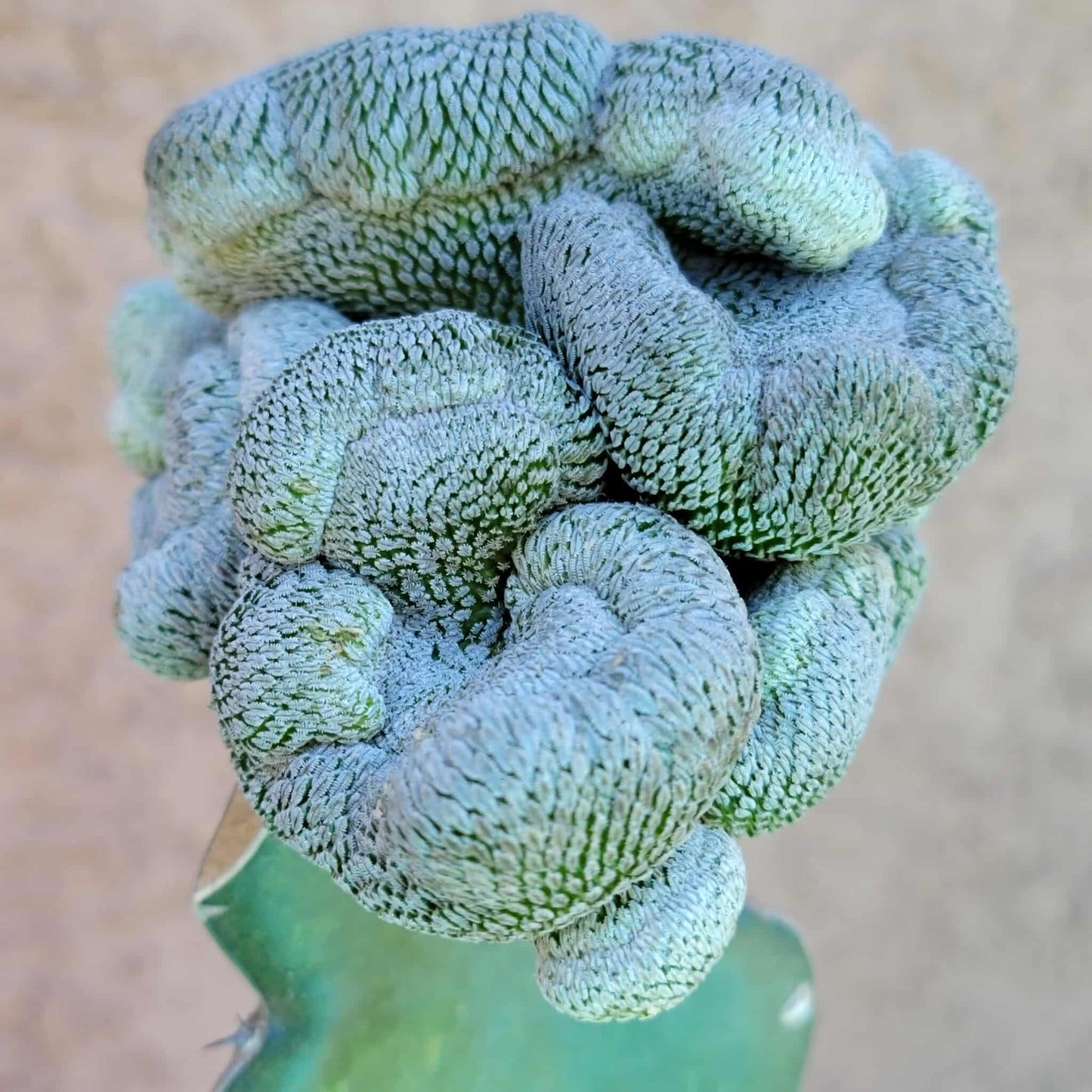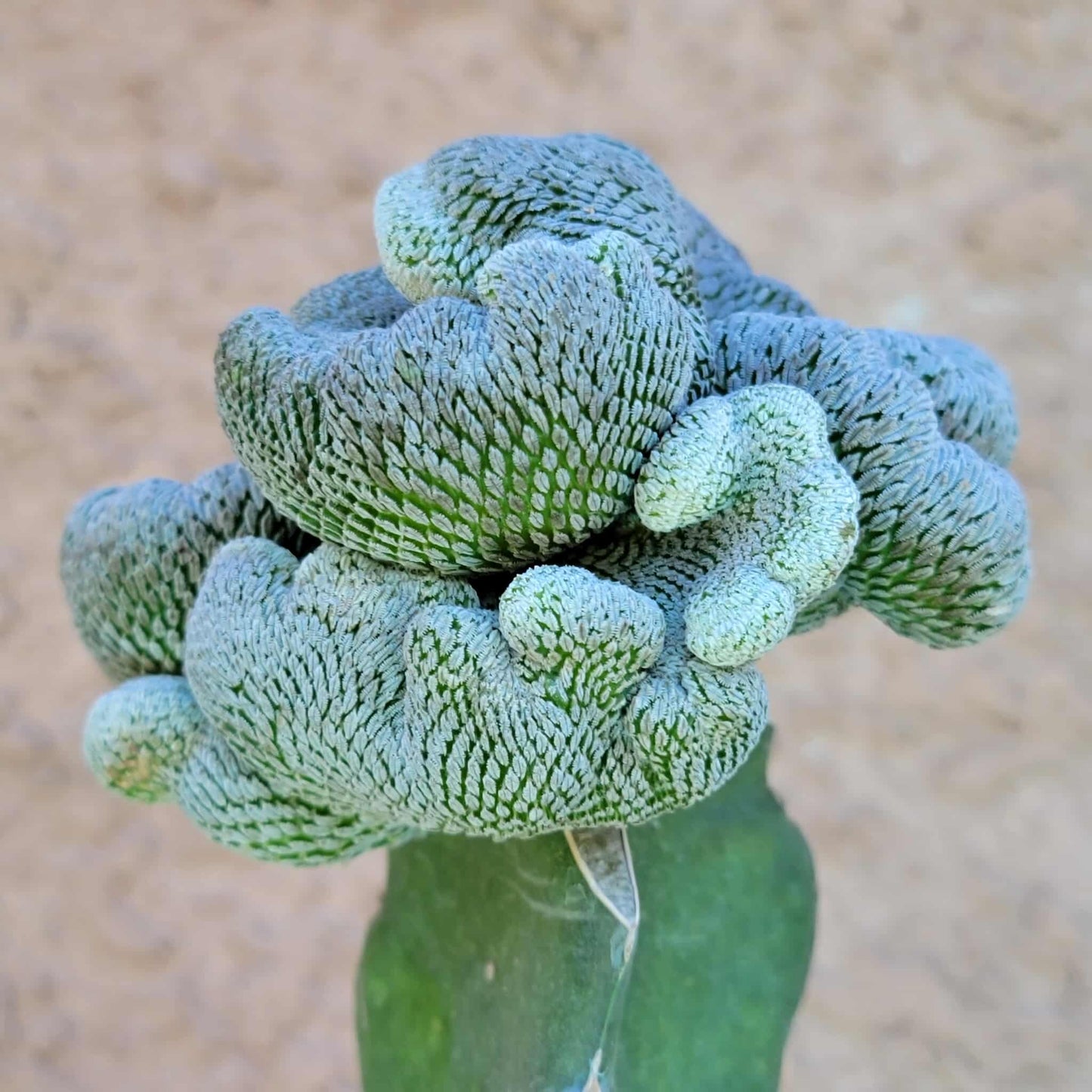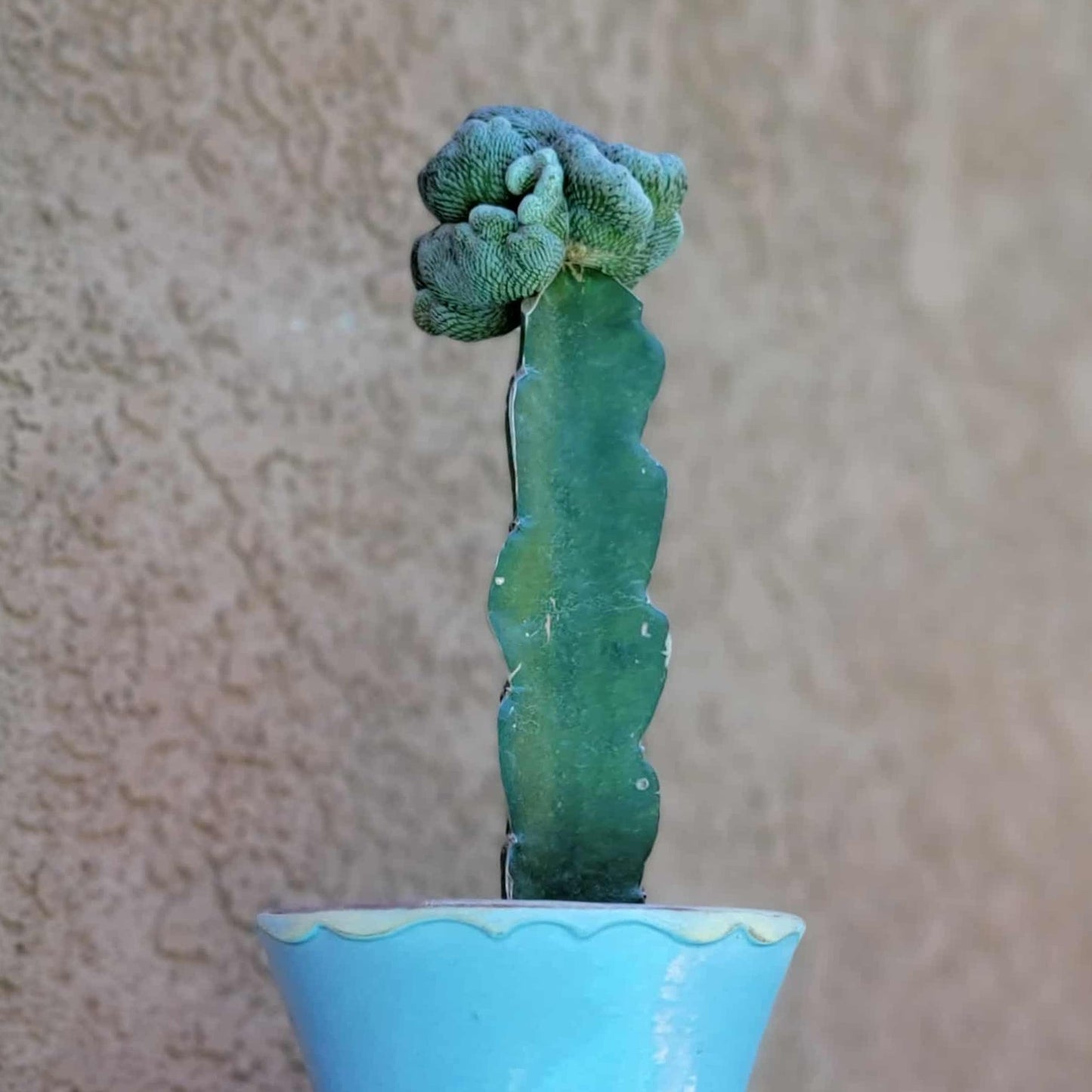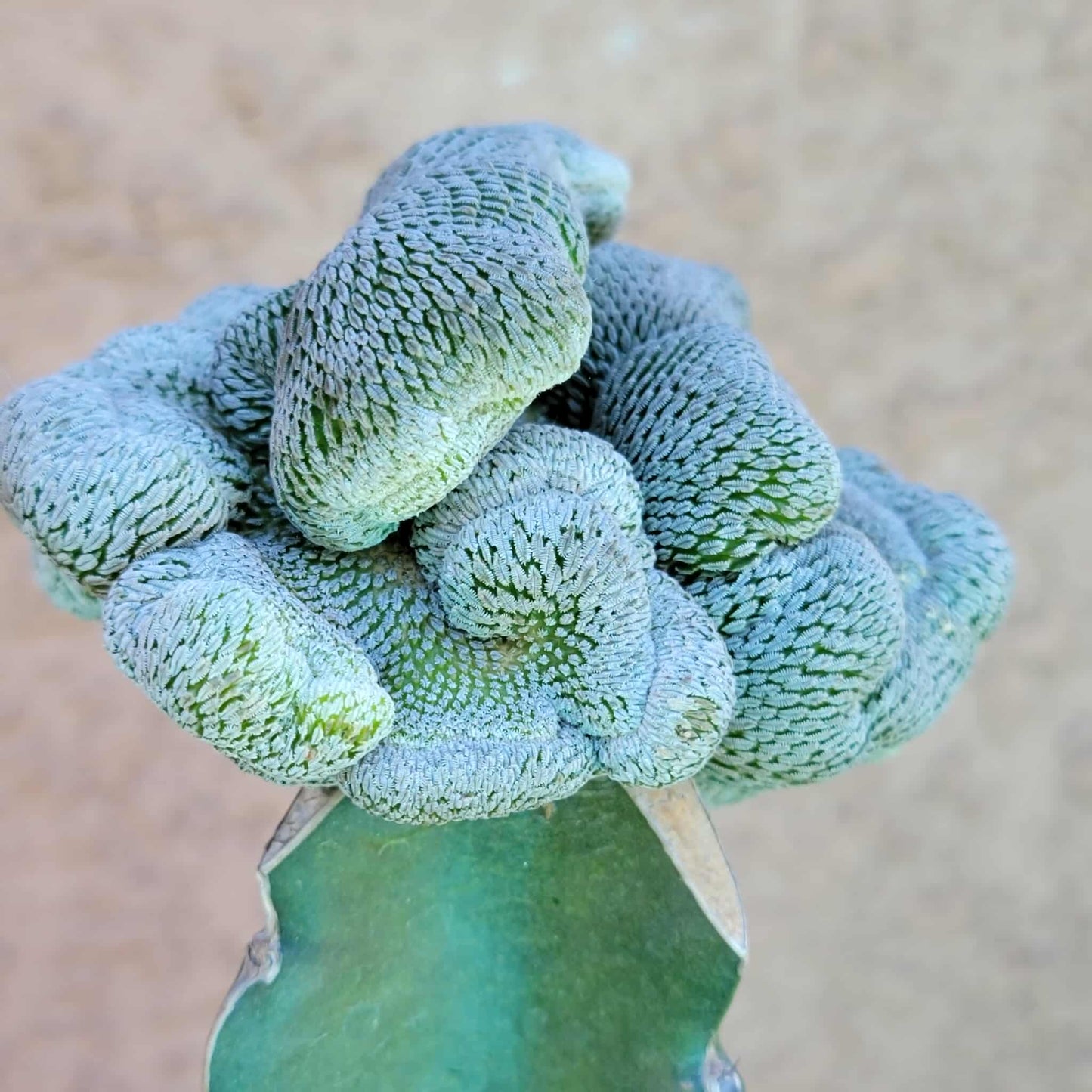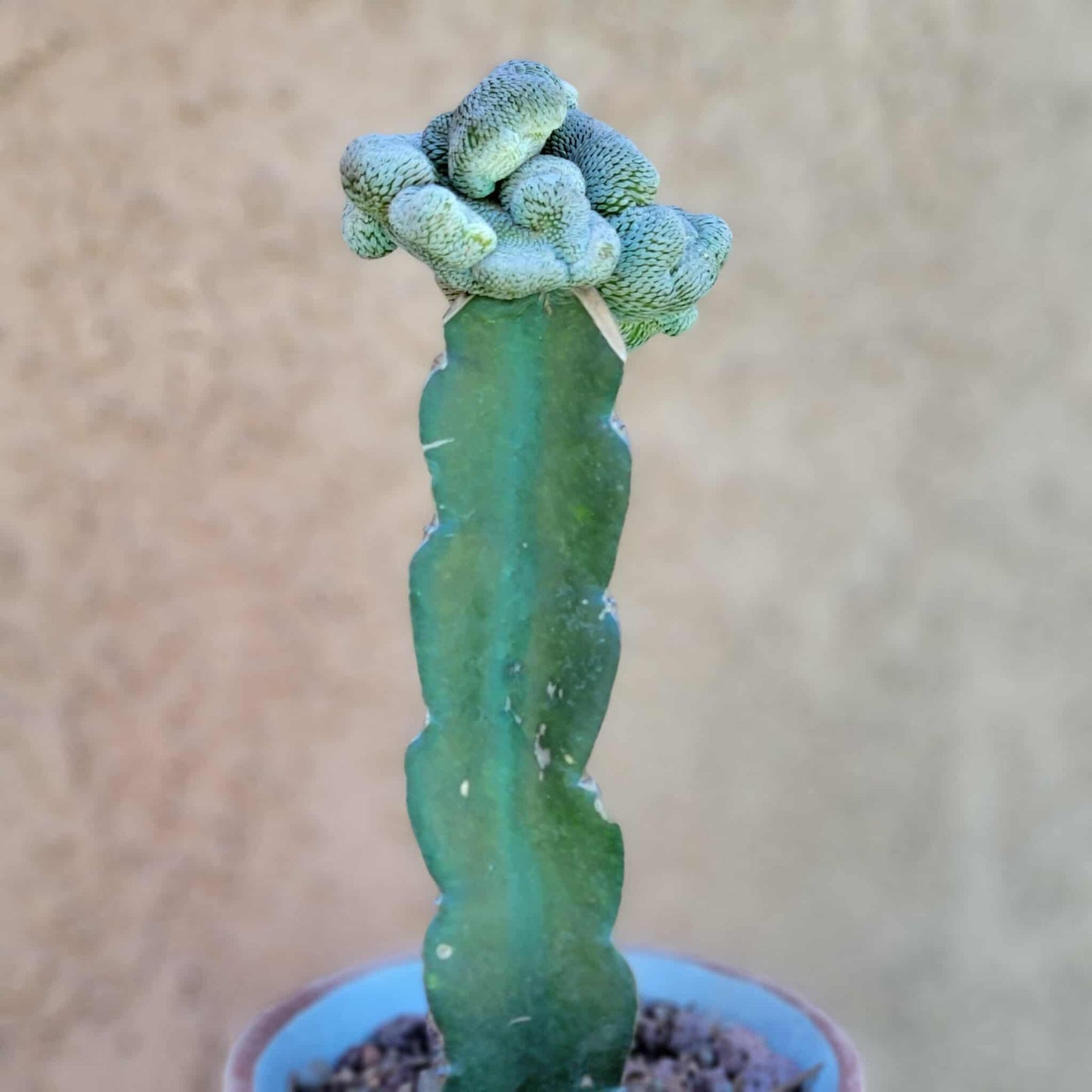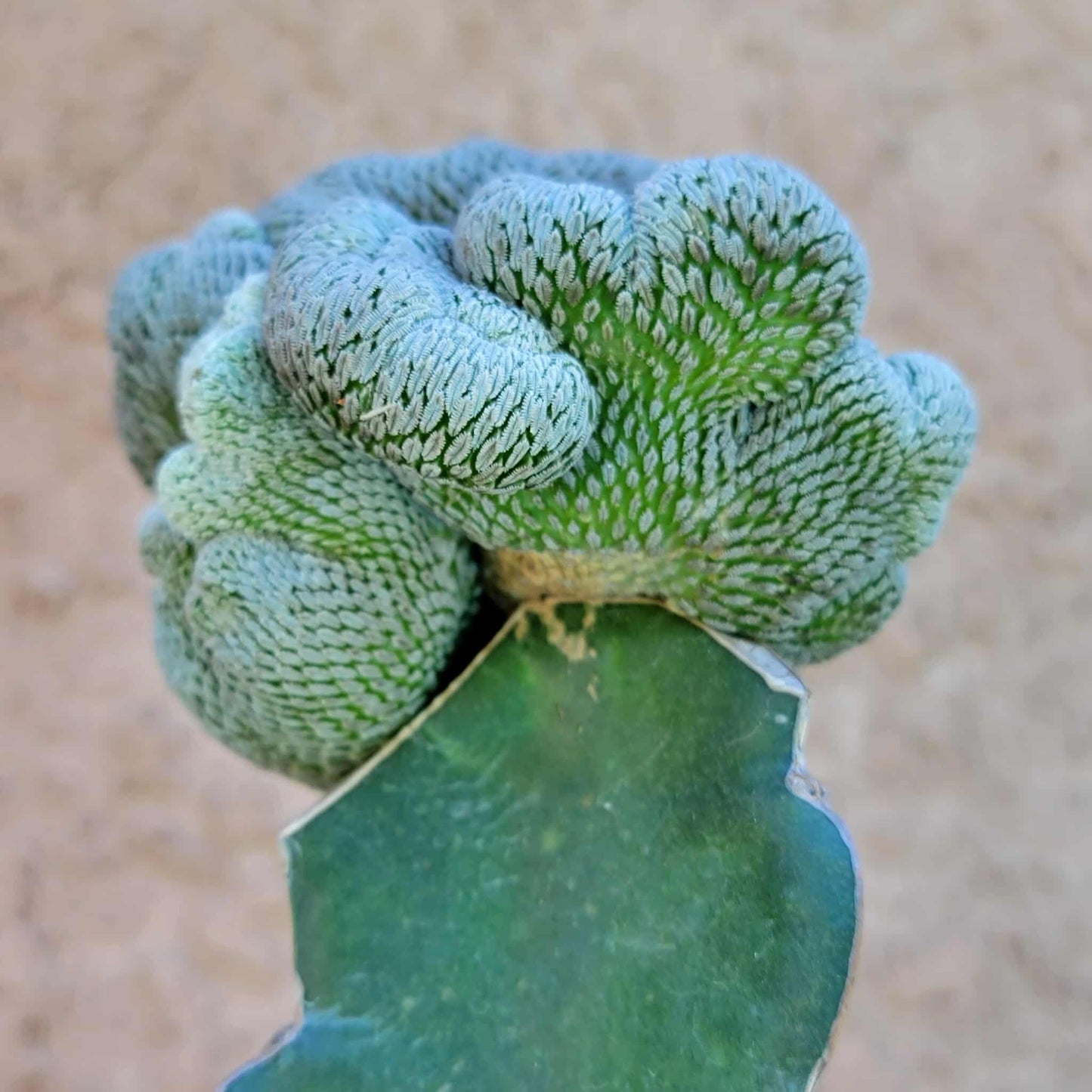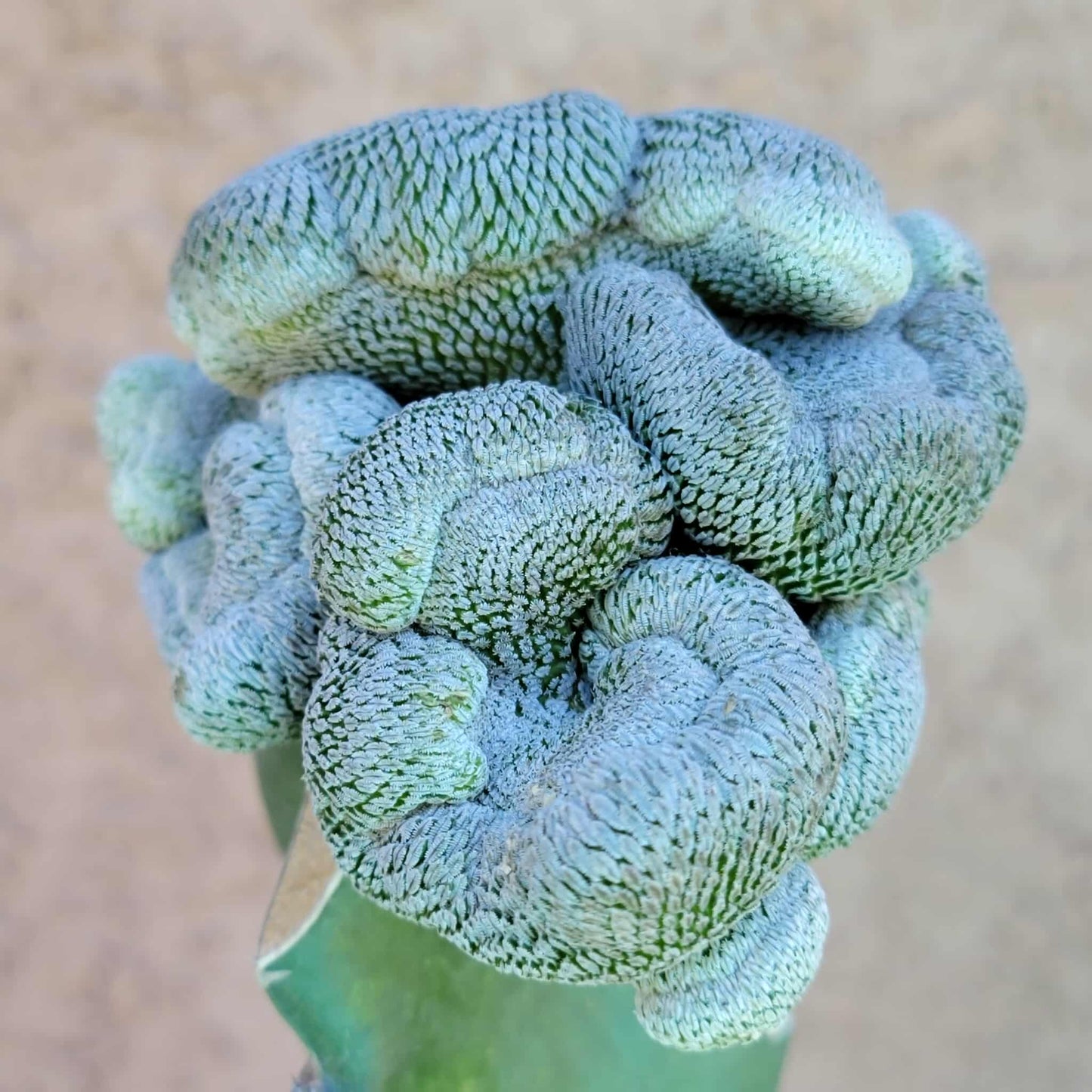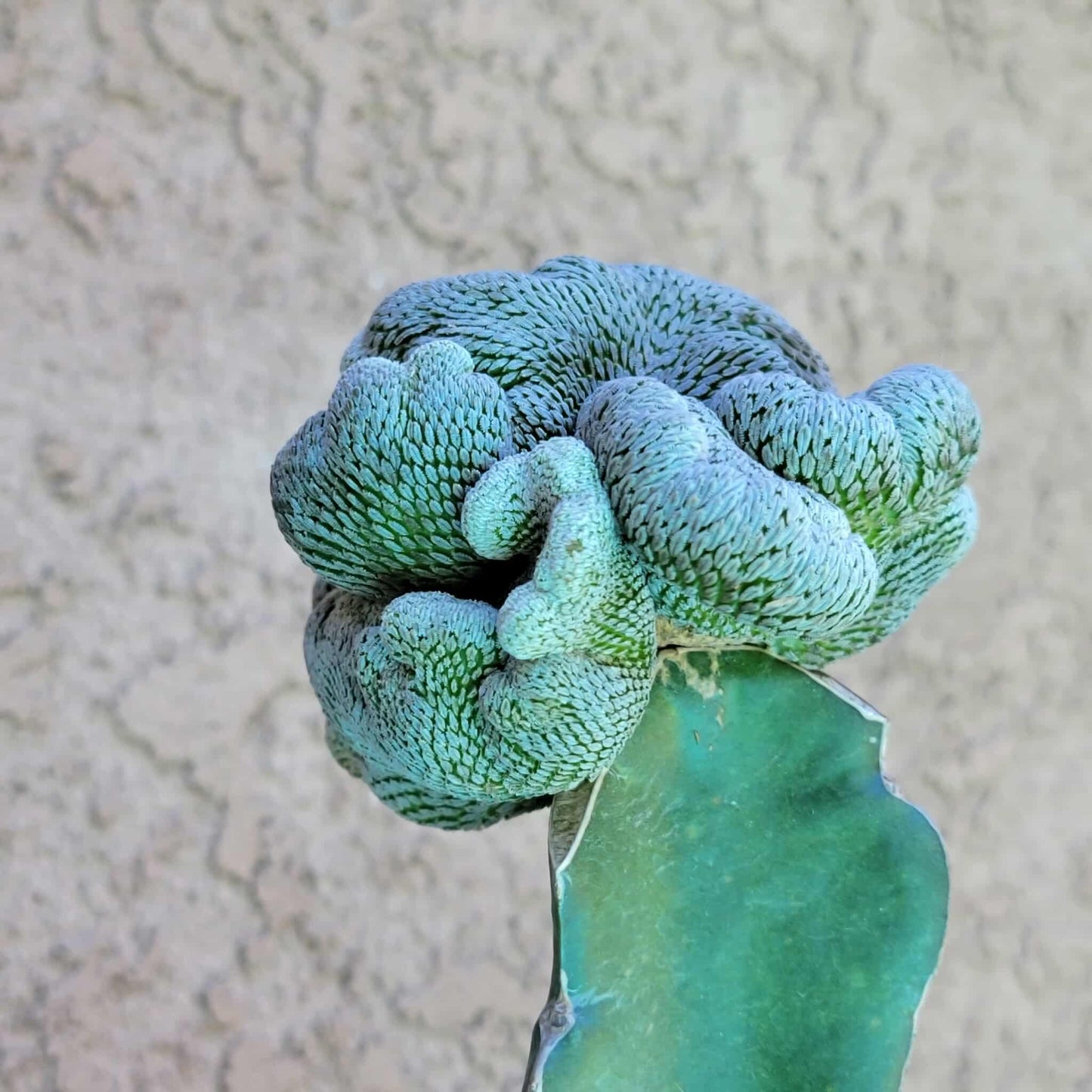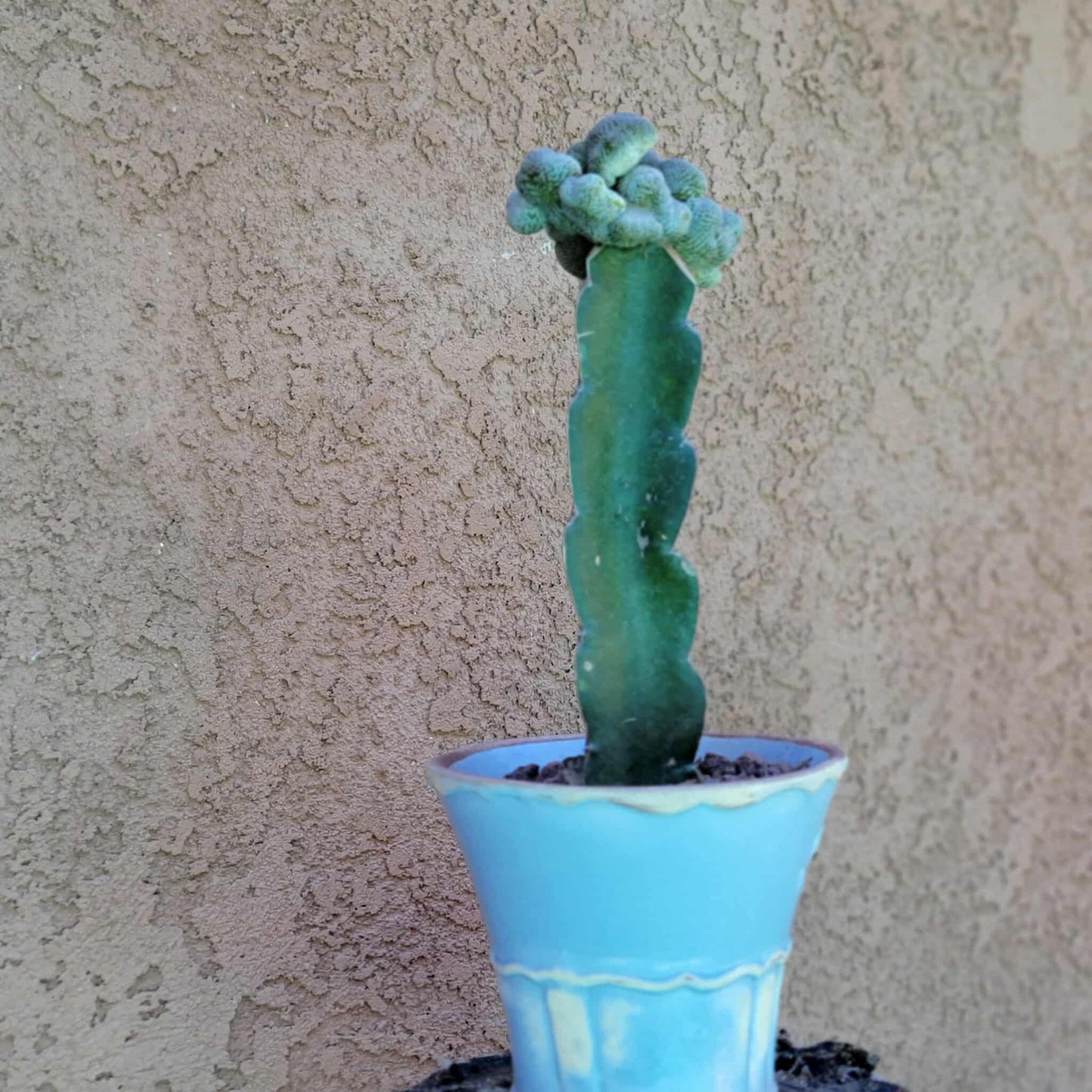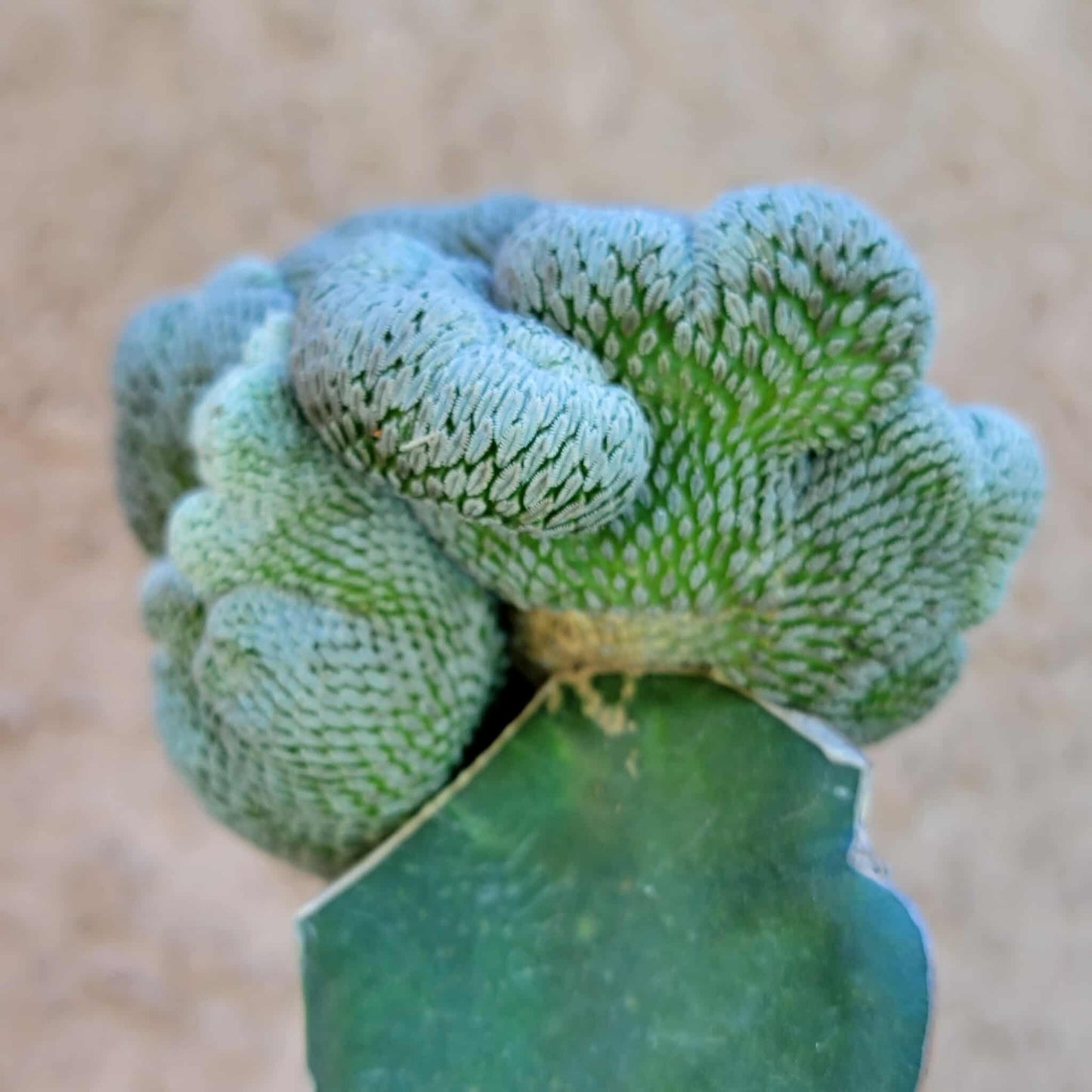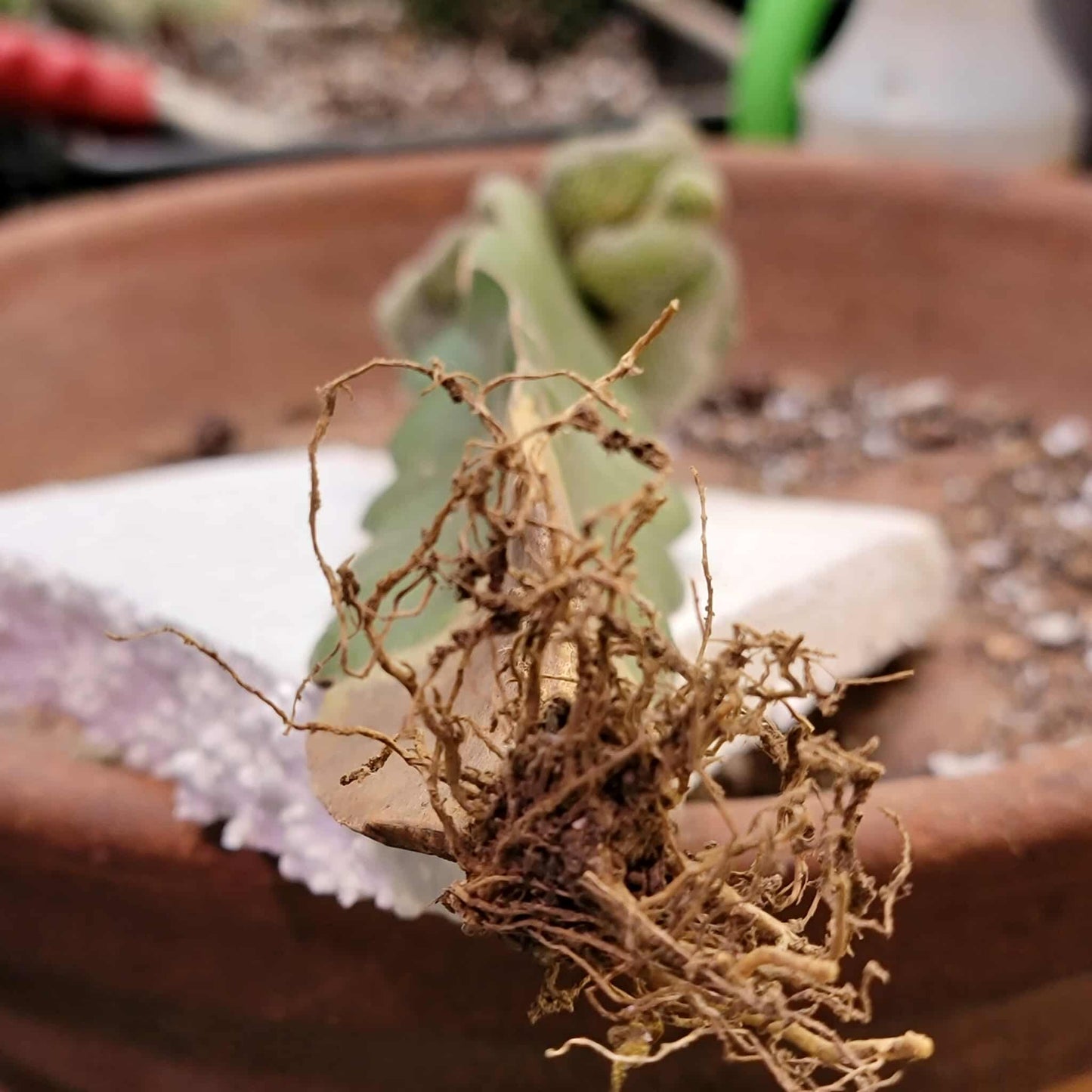Shangri-Ha Cactus Ranch
Pelecyphora aselliformis f. cristata - Crested Hatchet Cactus
Pelecyphora aselliformis f. cristata - Crested Hatchet Cactus
Couldn't load pickup availability
Pelecyphora aselliformis f. cristata - Crested Hatchet Cactus
You will receive this exact, grafted specimen!
Scion measures 3” wide x 2.75” tall.
Entire specimen measures 9.5” tall.
Roots as shown.
Will be shipped bare root.
Pelecyphora aselliformis f. cristata, also known as the Crested Hatchet Cactus, is a fascinating and sought-after form of the Hatchet Cactus (Pelecyphora aselliformis). This crested form deviates from the typical species by having a fan-shaped stem, which can reach 10 cm (or more) in length as the plant matures.
Features and characteristics
· Distinctive Form: The most prominent feature is the crested, fan-shaped stem, unlike the globular or slightly elongated shape of the regular Pelecyphora aselliformis.
· Small and Slow-Growing: Both the species and the crested form are known for their small size and slow growth rate, making mature specimens highly valued.
· Unique Tubercles and Spines: The plant's appeal also stems from its distinctively shaped tubercles and spines. The spines are pectinated, resembling the woodlouse (Oniscus asellus), which gives the plant its name.
· Pink Flowers: Like the typical Pelecyphora aselliformis, the crested form produces attractive pink to purplish flowers. These flowers bloom in spring and emerge from the apex of the plant, often needing bright light to open fully.
· Rarity and Value: Due to its slow growth and often difficult rooting, Pelecyphora aselliformis f. cristata is considered rare and highly valued by cactus collectors. It is frequently found as a grafted plant, making "own roots" specimens even more prized.
Cultivation and care
· Light: Requires strong sun to partial sun for optimal growth and spine development. However, in its natural habitat, it grows under the shade of bushes and is not exposed to direct midday sun, suggesting the need for some shading during the summer months.
· Soil: Thrives in well-draining, gritty soil.
· Watering: Needs infrequent watering, allowing the soil to dry out completely between waterings. Overwatering can lead to leggy growth and rot. Keep the soil completely dry in winter or when night temperatures drop below 10°C, though some might give a light monthly watering to prevent the lower tubercles from drying out.
· Temperature: Tolerates short periods of cold down to -4°C, but good ventilation is essential, particularly during winter.
· Fertilizing: Fertilize every 4-6 weeks with a diluted succulent and cactus food from spring to early autumn, avoiding winter.
· Propagation: Can be propagated by seeds or cuttings, but grafting is often preferred due to its slow growth and rooting difficulties. Older specimens might produce tillers that can be grafted, a simpler method than sowing seeds.
Habitat and origin
The species Pelecyphora aselliformis is native to the state of San Luis Potosí, Mexico. It grows in grit and limestone rocks at elevations of 1800 to 2400 meters. Plants grow under the shade of bushes and receive little water in summer and none in winter.
Conservation status
The conservation status of Pelecyphora aselliformis is currently listed as "Least Concern" on the IUCN Red List. However, it is included in Appendix 1 of the CITES species (Convention on International Trade in Endangered Species), highlighting the importance of regulating trade to protect wild populations. Habitat destruction and overcollection pose potential threats to the species in the wild.
In summary, Pelecyphora aselliformis f. cristata is a slow-growing, crested cactus with unique features, making it a highly desirable plant for enthusiasts. With proper care and attention to its specific requirements, it can be a rewarding addition to any cactus collection.
